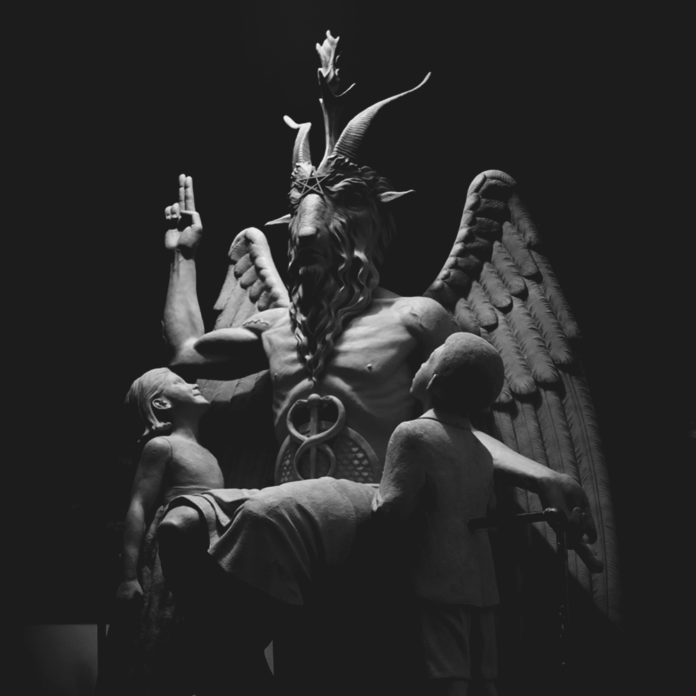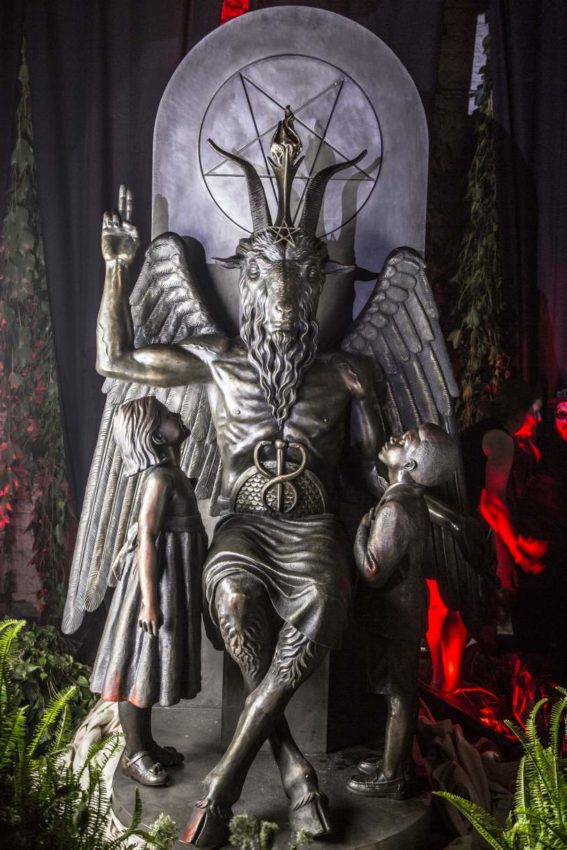
A little before midnight on Saturday the 25th of July, a crowd of around 700 gathered in an old industrial warehouse a few blocks from the Detroit River for what they’d been told was the “largest public satanic ceremony in history.” Most of them professed to be adherents of Satanism, that loosely organized squad of the occult that defines itself as a religious group. Others came simply because they were curious. After all, Satanists exist in the popular psyche as those who casually sacrifice goats and impregnate Mia Farrow with Lucifer’s child; if this ceremony was indeed unprecedentedly big, who knew what could be in store?
The reality of the event — and of the contemporary Satanic movement at large — was tamer, and, if the Facebook pictures speak the truth, harmlessly festive: a cross between an underground rave and a meticulously planned Halloween party. They were there to publicly unveil a colossal bronze statue of Baphomet, the goat-headed wraith who, after centuries of various appropriations, is now the totem of contemporary Satanism. The pentagram, that familiar logo of both orthodox Satanists and disaffected teens, originated as a rough outline of Baphomet’s head.

Baphomet contains binary elements symbolizing a reconciliation of opposites, emblematic of the willingness to embrace, and even celebrate differences,” Jex Blackmore, who organized the unveiling, told TIME late Sunday night. In a sense, the statue is a stress test of American plurality: at what point does religious freedom make the people uncomfortable?
What do statues symbolize and why do we make use of them? Well, they serve as monuments to highlight the wonderful work a person (typically) has done. They celebrate achievements and exist to remind us who we’re thankful to, for what’s been done. For example, President Nelson Mandela, who received a Nobel Peace Prize for ending apartheid in South Africa – his statue exists to remind us of what he did as well as the history around the event.
Erecting a statue of a Baphomet, not quite my scene. I hardly think it encourages wholesome morals and it certainly doesn’t encourage children to be model citizens.
Having a symbol of evil and rebellion for all to see does no one good, certainly not the community. Having said all this, it got me thinking about the reasons why. Every human being who has ever existed as well as those still to come long to belong, long to make their lives count for something; and want recognition for their beliefs.
Being a Satanist can’t be easy, especially when society frowns up it. So, in a way this is a big achievement for the satanic movement, yet I don’t think it’s a healthy one for society – simply because of what Satanism represents.
Let’s forget about this very obvious statue for a moment, and think about your own life. How many statues do we have erected in our lives for all to see? Whether we believe it or not, we all represent something, some moral code, some belief – and all those things follow us where ever we go.
So what do people see when they look at you? Do they see an accurate and honest representation of who you think you are, or are you fooling yourself by pretending? Decide today who you want to be, not based on the latest trends, popular culture and the influences of others around you; but decide for yourself, for your benefit – who do you want to be?
If you need help discovering who you want to be, click on the banner below.
Credits: Edited // www.time.com
Photo Credit: Matt Anderson
